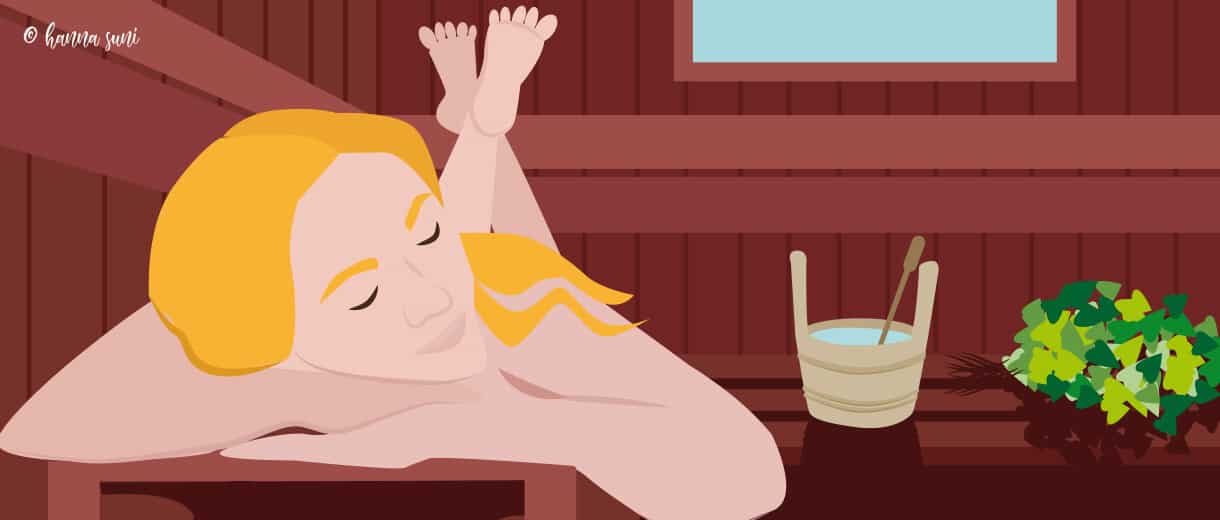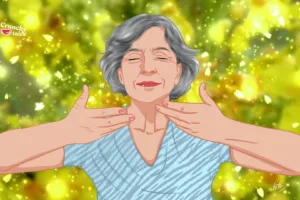The Fabulous Benefits Of A Summer Sauna
Going to the sauna in the heat of July might seem absurd to those who are not accustomed to this ritual. Yet it is precisely in the summer-time when saunas are most frequented in Finland – the home country of the heated room – and the rest of Scandinavia. Most summer cottages have a wood-burning sauna by the water and it is normal to heat it up every evening during the summer holidays. This distressing and relaxing bathing custom also has positive effects on our circulatory, cardiovascular and immune functions, particularly important in midlife. It’s time for you to try it out, too!
Positive effects for the heart, veins, muscles and skin
The recently published Finnish book Sauna, keho ja mieli (Sauna, body and mind) by researcher Tanjaniina Laukkanen and cardiologist Jari Laukanen presents the many health benefits of sauna bathing when performed regularly. Although the beneficial effects of sauna have been part of Finland’s common national memory for centuries, there was no scientific proof of them until 2018, when the two health professionals published the studies they had conducted on the topic.
The study was conducted in Finland over a time period of 15 years and it reveals several important health benefits for people who bathed 4-7 times per week, at least 20 minutes per time. “Regular sauna bathing is associated with a lower risk of heart disease, sudden cardiac death and hypertension”, Jari Laukkanen says. The heat of the sauna makes the heart rate rise to as much as 120-150 beats per minute, which corresponds to low- or medium-level endurance training in terms of circulatory load. Bathing also makes our blood circulate more efficiently and improves the flexibility of blood vessels. It is therefore known to lower blood pressure and reduce the risk of coronary heart disease.
The relaxing heat of the sauna can relieve muscle pain and tension, too. In some cases, the sauna is also known to have been useful in relieving headaches and rheumatic pains as well as pains and symptoms associated with musculoskeletal disorders such as osteoarthritis, rheumatoid arthritis, and fibromyalgia.
Regular use of sauna also boosts our immune system. “People who bath in the sauna frequently tend to have fewer flu symptoms and their inflammatory values are slightly lower. Lung inflammations such as chronic bronchitis, pneumonia and even asthma, are also less common among frequent bathers”, Jari Laukkanen reveals. There are also benefits for the skin and contrary to common belief, going to the sauna often does not dry the skin, but rather helps protect it by killing adverse germs. In the heat of the sauna, the skin’s surface blood circulation intensifies, the skin pores open and impurities are removed.
Relaxing and destressing the mind
If some of the above-mentioned positive physical health effects require more frequent bathing, those for the mind can be achieved even more easily, with a bathing session every now and then. Traditionally, sauna baths have been used for purposes of pleasure and relaxation, as enjoying the heat in the tranquil atmosphere evidently reduces the stresses of everyday life. In fact, most Finns bath at the end of the long work week, on Saturday evening. Although the sauna is often enjoyed together with family or even friends, it is typical to keep the conversation low and even sit together in silence, enjoying the relaxed state of mind.
According to a study, sauna bathing is also inversely associated with dementia and Alzheimer’s disease in middle-aged Finnish men. Those who enjoyed the sauna more frequently decreased the risk of dementia and Alzheimer’s by 66 per cent. As a relaxing and destressing habit, regular sauna bathing can improve the general quality of life and sleep.
The proper sauna ritual
Finnish sauna bathing is quite different from stepping into a steam room for two minutes while at a spa. According to the Finnish Sauna Society, the right amount of time needed to fully relax and enjoy the sauna experience is an hour and a half. You get undressed and leave all your belongings in the dressing room – including the watch, even if waterproof, for there must be no rushing through the ritual. If you are using a public sauna, it is a good idea to use a towel to sit on. You should take a shower or dip in the water – if by a lake or sea – before entering the sauna, in order to moisten your skin and remove any chemicals such as deodorants and creams, leaving your skin bare and clean to absorb the beneficial effects.
When entering the sauna room the air might seem very hot and dry – the recommended temperature is around 80-100 degrees Celsius – but throwing water on the stones will quickly humidify the air. It will also increase the room temperature, so be careful of not doing it too often. After 5-10 minutes or when you start feeling too hot, step outside into the shower or take a swim to cool your body off. You can also have a drink of water before re-entering the heated room again.
You should repeat the same pattern as many times as you’d like before finally washing. After drying yourself with a towel you can sit in the dressing room or outside for a few minutes to let your body temperature cool down to avoid starting to sweat again. Then get dressed and, if necessary, apply some moisturizing cream on your body. As sweating is abundant in the sauna, it is important to hydrate yourself well afterwards. Drinking water is the best remedy, even though many Finns enjoy an after-sauna beer or sodas as well.
Different types of saunas
Sauna bathing is a custom in many countries and it is usual to find steam rooms at spas, sports centres and swimming pools in most countries. You can experience the hammams in Turkey and Marocco, sentos in Japan and temazcals in Mexico, each offering a unique atmosphere and ritual with similar health benefits of relaxation and destressing.
Apart from the manmade saunas, you can also enjoy different types of natural steam caves and hot springs. For example, on the island of Ischia, in Italy, there are natural cave saunas (fumarole) at Maronti beach and Sant’Angelo village. The Yampah Hot Springs Vapor Caves are located near Glenwood Springs in Colorado, Halfway Hot Springs in British Colombia, Canada and you can find several volcanic hot springs in Iceland.
If you’d like to get in the habit of going to the sauna regularly, you can search for the closest saunas and steam rooms in the UK. The North American Sauna Association, AISA in Italy as well as the International Bath Academy also give information and advice on the culture of sauna bathing. It is a great way to give a pamper your body and mind, and making it into a regular habit increases its positive effects.





